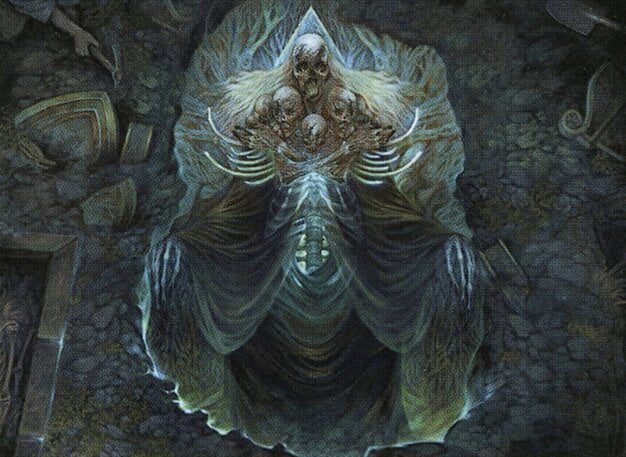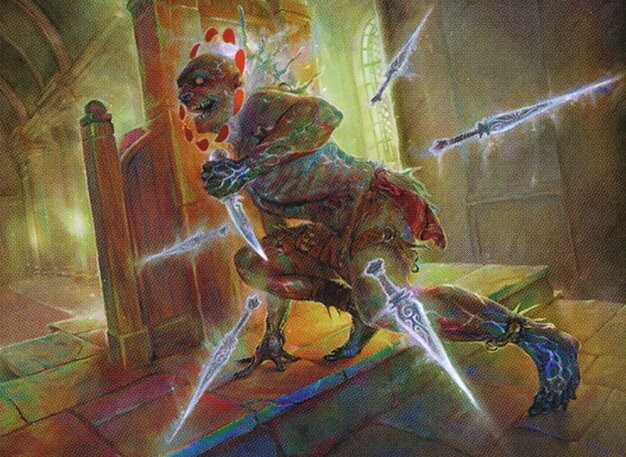Bhaal. Cyric. Gruumsh. Shar. Myrkul. Malar. Talos. Lolth. Bane. Tiamat. The names of dreadful forces, towering gods of evil and spite, entities that draw power from the very nature of what it is they embody. These are the evil deities of the Forgotten Realms, whose machinations and operators sprawl across the world before you, and whose presence makes the world a diabolical and dangerous place. They are powerful, they are malicious, they are intelligent, they are gods and above all, uniting them all, they are evil.
These entities, by the rules for gods in worldbuilding laid out in 3e, don’t make any fucking sense.
In 3e, gods got mechanics. They got rules for how they worked and what that meant. There was, to some extent, an idea outlined in the rules for how a god’s power was proportionate to their worshippers. Gods that ruled over, functionally, regions or whole heritages, they were powerful in proportion to their oversight. And these gods would usually form some variety of a roughly-balanced pantheon, with tiers of gods, depending on their power and their availability and those tiers of power would inform what they could do or how much of the world they could influence, like factions in an RTS.
Now, first of all, giving anything as important and story relevant in terms of its potential vaguaries and flexible boundaries as a deity a hard set of rules and population statistics is foolish. It’s foolish because you don’t need it and it’s foolish because it doesn’t get you anything useful and it’s foolish because it creates boxes into which you start to pour populations, but it’s also foolish, specifically here, because in the existing pantheon of evil deities in D&D3e, it creates a relationship to power and worshippers.
Gods who have a lot of worshippers have more power. This creates an incentive for gods to nation build, to maintain control over populations, and that kinda makes them a great example of a sort of organically created fascism generator. Gods need control over populations to create populations that they can feed on, and it’s magically enforceable. I mean if you want a lot of fascist states with gods in it to kill, you can probably dictate that as a reasonable setup.
But the gods of evil in 3e weren’t like that. They weren’t all creating fiefdoms to maximise their populations, and what’s more, they weren’t doing it in a way that made sense. Evil gods in 3e were largely, just extremist philosophies that could draw their worship only from people who were explicitly, absolutely, and definitely evil.
Just as an example, Bane was a god of tyranny, evil and dominion. He has a church, and that church oversees the domains of fear, hatred and tyranny. That is: he has a church of total assholes. He has a church whose primary role in any city it sets up to promote, constantly, the recruitment and oppression of others.
In a civilised society.
The church of Bane is described in 3e as being pretty well organised and even pretty widespread. Talos has churches in major cities and they’re dedicated to a god of destruction and storms. Bhaal is a god of ritual murders, and he also has a church and you gotta ask yourself: Why.
Why do people have these things, why would they be tolerated in a city’s space?
Either on the one hand: The god is stupid, and they are spending their time wearing a hat saying ‘drive me out of sensible society,’ instead of focusing on mundane, reformed, deniably evil, or the god can’t do that and the followers of an evil god are probably less common than non-followers of that evil god. And how do they recruit?
In the real world, religions don’t tend to recruit from just any random interested party. There’s not actually a lot of shopping around for religion, and those that do tend to do it within a small circle of pre-existing interests.But let’s imagine for a moment that people do actually completely dispassionately evaluate religious options around them and opt for the ones that offer literally the best pitch, just how many people are going to go to the church that promises tyranny and oppression? Openly? Real world fascists who really want tyranny and oppression are a tiny minority and they operate in secret and use coded language, and often even lie to themselves about what they want.
What I’m saying is that in a conventional situation, any asshole god of dominion and evil that was capable of not calling themselves that would have a lot more opportunities to pick up worshippers. And they have to have a lot of worshippers, right? These gods are great and powerful outer gods, able to rival the gods of things people like like harvests and life and love. Remember Sune, the weirdly impotent goddess of love? Does love rank against evil?
Here’s an alternative of course: What if the gods of evil don’t have huge crowds of followers to rival the others but it’s their devotion to the evil god that gives them the power to go toe to toe with the other gods? That creates a new problem where apparently, literally, hate is more powerful than love.
A third path, I suppose, is that most people don’t worship gods at all, and that most people are instead just putting out an ambient sort of ‘yeah, gods exist’ vibe that doesn’t actually translate into power for the god. You know, belief is a currency you have to specifically spend, which unfortunately begs the question of why aren’t milquetoast gods scooping that up?
Okay, so what of it? Like sure, I’ve already talked about the ways that third edition worldbuilding had problems, sure. This is just one more of them, the way that you got the peculiarities of a polytheistic pantheon devised by monotheistic men who operated on the assumption that the god they worshipped actually existed, really, and therefore, there was no particular difficulty just copy-pasting religion structures.
In that regard, the way that polytheism is practiced in in third edition is nothing like the way polytheism is practiced in real life. See, the gods in these worlds exist. They’re real, they’re agents, there’s no need to believe in them to ensure they exist at all – which most real world gods, to be careful about, seem to need. In the real world, a lot of polytheistic belief is not about picking a dude in the lineup to team sports after, but to instead understand that all of reality around you is a relationship between these groups. That there are places and times that make each of them important and that they relate to your life in different ways. Sailors don’t worship Neptune because they’re sailors, but they offer prayers and sacrifices to Neptune before they go onto the water because they’re about to go wandering around in that dude’s house.
And all of this, all of this is because the world building had a need to give stats to things. To create a world where Greater Outer Gods had lower Divine Rank stats than gods with Greater Inner God status, and we have terms like Quasi-Deity for Hero Gods. Where multiple collapsed aspects of a god can have their stats gamed out for fights with The God itself.
3e really tried to quantify some very silly things.


